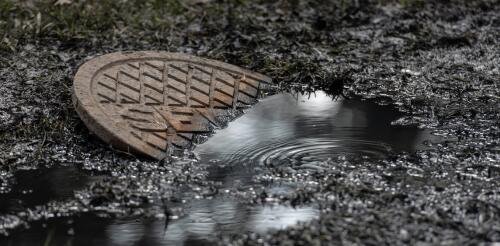Clean Water Act
It’s expensive to pollute the water in Colorado. The state’s median fine for companies caught violating the federal Clean Water Act is over US$30,000, and violators can be charged much more. In Montana, however, most violators get barely a slap on the wrist – the median fine there is $300. Similarly, in Virginia, the typical Clean Water Act violation issued by the state is $9,000, while across the border in North Carolina, the median is around $600. Even federal penalties vary significantly among regions. In the South (EPA Region 6) the median Clean Water Act penalty issued by the U.S. Environmental Protection Agency regional office is $10,000, while in EPA Region 9 (including California, Nevada, Arizona and Hawaii), the median is over six times as high. We discovered just how startling the differences are in a new study, published in the Stanford Environmental Law Journal. My colleague Amy Vaughan and I reviewed 10 years of EPA data on penalties issued under...
When storms like Hurricane Ian strike, many people have to cope afterward with losing water service. Power outages mean that pumps can’t process and treat drinking water or sewage, and heavy stormwater flows can damage water mains. Ian’s effects echoed a similar disaster in Jackson, Mississippi, where rising river water overwhelmed pumps at the main water treatment plant on Aug. 29, 2022, following record-setting rain. The city had little to no running water for a week, and more than 180,000 residents were forced to find bottled water for drinking and cooking. Even after water pressure returned, many Jackson residents continued to boil their water, questioning whether it was really safe to drink. Jackson had already been under a boil-water notice for more than a month before the crisis, which arrived like a slow-motion bullet to the city’s long-decaying infrastructure. Now, Jackson and its contractors face lawsuits and a federal investigation....
The U.S. Supreme Court opens its new session on Oct. 3, 2022, with a high-profile case that could fundamentally alter the federal government’s ability to address water pollution. Sackett v. EPA turns on a question that courts and regulators have struggled to answer for several decades: Which wetlands and bodies of water can the federal government regulate under the 1972 Clean Water Act? Under this keystone environmental law, federal agencies take the lead in regulating water pollution, while state and local governments regulate land use. Wetlands are areas where land is wet for all or part of the year, so they straddle this division of authority. Swamps, bogs, marshes and other wetlands provide valuable ecological services, such as filtering pollutants and soaking up floodwaters. Landowners must obtain permits to discharge dredged or fill material, such as dirt, sand or rock, in a protected wetland. This can be time-consuming and expensive, which is why the case is of keen...
The U.S. Supreme Court will test how flexible the EPA and states can be in regulating water pollution under the Clean Water Act when it hears oral argument in City and County of San Francisco v. Environmental Protection Agency on Oct. 16, 2024. This case asks the court to decide whether federal regulators can issue permits that are effectively broad orders not to violate water quality standards, or instead may only specify the concentrations of individual pollutants that permit holders can release into water bodies. My research focuses on water issues, including the Clean Water Act. This case involves both federal and state authority to issuing permits, and it will be interesting to see where the court focuses. While justices have been willing to limit the EPA’s authority under the act, they traditionally have allowed states broad authority to protect water quality. Thus, while some fear that this case is yet another occasion for the court to limit the EPA’s authorit...



